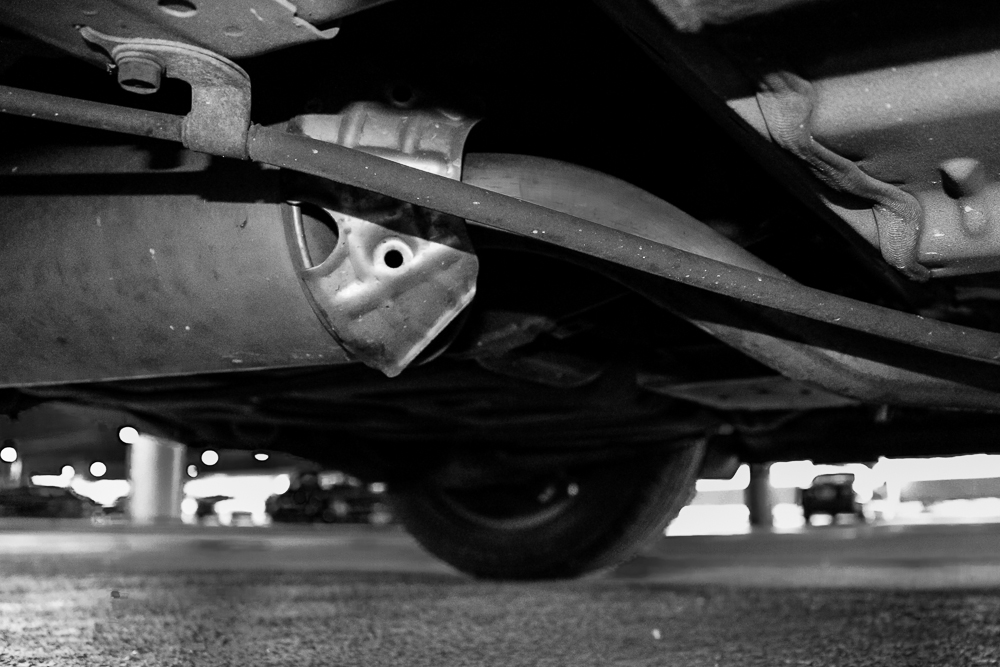Car Analogy
Understand The AHP By Thinking Like A Mechanic
Understand The AHP By Thinking Like A Mechanic
By C.P. Aderhold | Physics Teacher at Glenbard East High School | Lombard, IL
How do you tell if a car is in need of repair?

How do you tell if a car is in need of repair?
Have you ever had to explain what is wrong with your car? You probably have described a sound that it makes. Have you overheard someone describing the funny sound their car makes? Peoply readily turn to sounds to describe what is wrong with their car. Comedians, such as Jerry Seinfeld and more recently Brian Regan, have consistenly poked fun at how silly people act as they describe the sound of their cars to a mechanic. This might seem silly, but it provides important information to a mechanic who can use this information to diagnose the problem.
How it works
The mechanic has a vast database of knowledge stored in his or her head that not only provides information about how a healthy car should sound, but also knows specifically what unique sound each broken part of the car makes. By listening to the person or to the car, the mechnanic can narrow down the possible ailments of the car. While this won’t always pinpoint the issue, it does help the mechanic look in the right place, saving valuable time. It might even prevent other tests. For example if your car sqeaks everytime you push down the brake pedal, your mechanic will know not to test the condition of the car battery.
Imagine More Precision
Now imagine that the mechanic used some fancy tools to listen closer than he or she could do with just their ears. Maybe they would use a microphone or stethescope. However he or she listens, imagine that the subtlest changes were now audible. What if the mechanic could now hear the difference between a car tire at proper inflation and another tire that was 3 psi too low? What if the mechanic could hear a tiny hole in your muffler, long before it was big enough for you to hear the obvious sound of a broken muffler?
The Audible Car Project

With all these new sounds, the mechanic would have to really increase that database of good and bad sounds. The mechanic would probably want all this very detailed information accesible on the computer as a reference for any car that comes in. A healthy sedan would sound differnet than a healthy diesel truck, so this database would have to be pretty detailed. This would certainly require more than one mechanic, which is alright since every mechanic could benefit from such a database. Perhaps the mechanic would call it the Audbile Car Project, or “ACP.”
Where to start

Where to start
Mechanics would have their work cut out for them as they started this ACP and chose their super sensitive microphone and sensors. They would probably start with something easy, something that they already know how to diagnose, such as a punctured muffler. If debris from the road were kicked up hard enough, it could bump into the muffler on the underside of the car. This could cause a hole to form which would not only make the car really loud but change the backpressure within the exhuast system. This would make the car sound more like a NASCAR
How does this relate to the human body at all?
Well, let’s recap what we know about the ACP so far. The ACP would…
- help the mechanic know where to look.
- reduce how much the mechanic needs to disassemble the car.
- help the mechanic determine what sort of specialist your car needs to see (brakes, muffler, tire, etc).
- provide a database of good and bad car sounds that mechanics everywhere could use.
This would be great if we could do the same with humans. Imagine if we had a database of good and bad sounds that parts of the human body make. Now let’s revisit that list and change some words, namely substitute “doctor” in place of mechanic. An Audible Human Project would…
- help the doctor know where to look.
- reduce how much the doctor needs perform invasive tests on the body.
- help the doctor determine what sort of specialist to see (cardiac, surgeon, radiologist, pathologist, etc)
- provice a database of good and bad body sounds that doctors everywhere could use.
This sounds great! Where do we go from here?

This sounds great! Where do we go from here?
One of the forerunners to the AHP involved punctured lungs(pneumothorax), instead of puntured mufflers. Pneumothorax, or PTX, is a condition which can be sublte (easy to to miss, even with a stethescop) to severe (obvious to someone standing in the same room). Now the AHP is focusing on quieter ailments and much more precise baselines. Just as automakers first 1) design a car on a computer, then 2) scuplt a 3D model before 3) testing an acutal prototype, so does the AHP 1) design a torso on a computer, then 2) mould a torso phantom and then 3) test pig and human subjects.